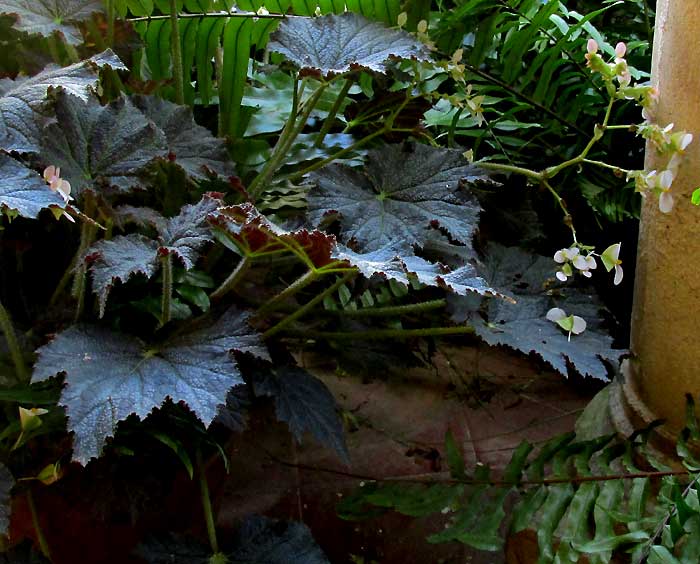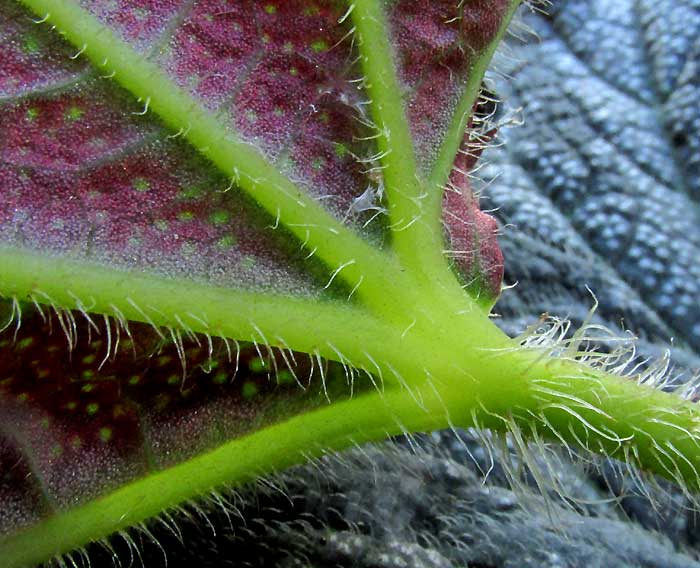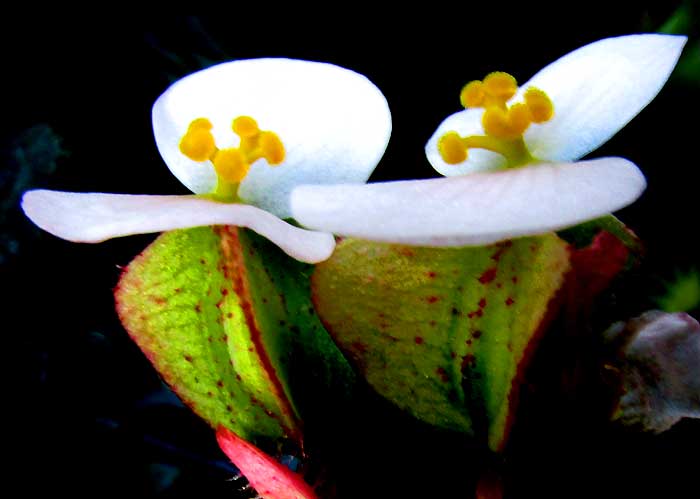Excerpts from Jim Conrad's
Naturalist Newsletter
Issued on January 13, 2020, from the forest just west of Tepakán; elev. ~9m (~30 ft), N21.053°, W89.052°; north-central Yucatán state, MÉXICO
CASTORBEAN-LEAFED BEGONIA
Below you can see an unusualy large, robust begonia often grown in pots and around people's homes here.

Below, you can better see a leaf and flowering head:

Besides the large size, the leaf is distinguished by its broadly asymmetrical form, by the stem attaching to the leaf at the bottom of a cleft in its side (not "peltate"), the leaf being deeply lobed but not deeper than halfway to the base, the many tiny serrations or saw-teeth along the margin all around, the purplish color, and the warty surface with sunken veins. When reviewing over 1000 illustrations of Begonia species in a major 1986 treatment of the Begonia Family by Lyman Smith and others, leaf features enabled me to discount nearly all the species. Below, you can see another diagnostic leaf feature, on a leaf's undersurface:

Two female flowers each bearing two white petals are shown below:

Despite so many distinctive features, I couldn't perfectly match our Begonia with any of the 1000+ species in the Lyman Smith work. Eventually I realized that our plants are hybrids between Begonia heracleifolia and Begonia barkeri, heracleifolia native to Mexico south to El Salvador, and barkeri just to Mexico. Though neither parent species occurs in the arid Yucatan, the hybrid is thoroughly Mexican.
Our potted hybrids are known as BEGONIA x RICINIFOLIA, sometimes written as Begonia 'ricinifolia,' the name translating to Castorbean-leafed Begonia. Begonia x ricinifolia was created in England around 1847 by Albert Gottfried Dietrich, and is considered one of the oldest begonia hybrids known today.
Several cultivars based on hybrid Begonia x ricinifolia are marketed, 'Immensa' seeming to be the most commonly sold on in the Internet. A Begonia expert in France lists 16 other cultivars such as 'Bardon Hills,' 'Gigantea Odorata,' and 'Mrs. Mary Peace.' I read that the original hybrid bore rose-colored flowers, while ours are white.
Ricinifolia cultivars are known for their very large flowering heads, reaching over a yard tall (1m), and a flowering period of several months. It's easy to grow, and is one of few Begonia species able to tolerate strong afternoon light. It's easy to reproduce the plant by dividing its rhizomes.